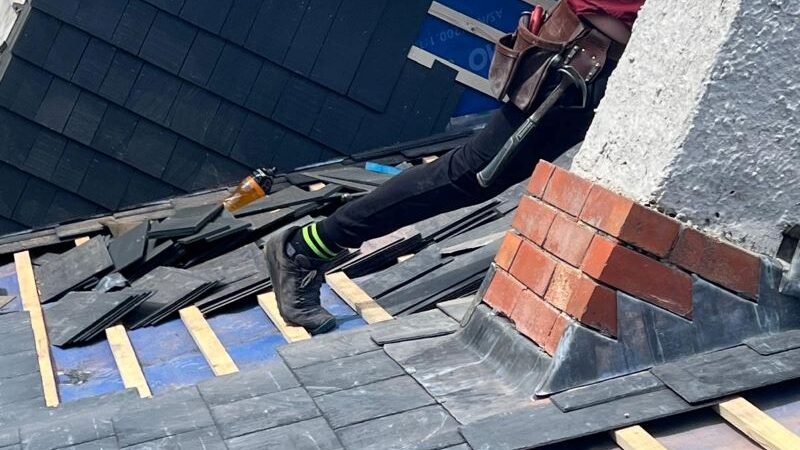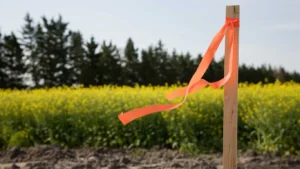Maximise the Lifespan of Your Slate Roof with Premium Flashing Solutions to Prevent Costly Water Damage
Flashing is a vital protective barrier installed at the most vulnerable points of your roof, particularly where tiles intersect with walls, chimneys, or valleys. Without a professionally installed flashing system, even the most carefully laid slate roof can succumb to leaks over time, resulting in expensive repairs and extensive water damage. Lead is the material of choice for flashing in slate roofing due to its remarkable flexibility, outstanding durability, and ability to accommodate the natural movements of the roof structure. This characteristic ensures a secure and tight seal that effectively prevents any water ingress, thus safeguarding your property from potential damage.

Understanding the Function and Importance of Flashing for Your Slate Roof
Flashing is a crucial element that seals joints and edges around structures such as chimneys, skylights, roof valleys, and any other areas where your slate roof meets a wall or changes direction. These joints are particularly vulnerable to water infiltration; without effective flashing, they are likely to be the first areas to fail, leading to significant leaks. In modern construction, flashing materials may include various sheet metals; however, for traditional applications on slate roofs, Lead continues to be the superior and trusted choice among professionals.
Why choose lead? This exceptional material not only seals effectively but also moulds itself to create a robust barrier against various curves, slopes, and edges found in roofing structures. It naturally expands and contracts with temperature fluctuations, eliminating the risk of cracking or splitting, which is common with less flexible materials. Unlike synthetic alternatives, lead does not corrode or rust, allowing it to maintain its integrity significantly longer, often outlasting the slate itself, thus ensuring your roof remains protected for many years to come.
Consequences of Inadequate Flashing Performance and How to Identify Them
Even the smallest tear or gap in your flashing can lead to significant leaks and damage. These leaks are rarely straightforward; water can infiltrate beneath the tiles, reach the underlay, and gradually result in severe issues such as rot, mould, or extensive damage to your internal ceilings. The repercussions of flashing failure might not be immediately visible, often taking years to manifest, and by that time, repairs can become extensive and costly. Issues stemming from inadequate flashing are among the leading causes of hidden roof failures that can jeopardise the structural integrity of your home.
If you observe stains on your ceiling, bubbling paint near a chimney, or patches of moss accumulating in certain areas on your roof, these could be indicative of deteriorating flashing being the underlying cause of the problem. It is crucial to address these warning signs promptly to avoid more significant structural damage in the future.
The Enduring Advantages of Choosing Lead as Your Flashing Material
For centuries, lead has been the preferred material for slate roofs due to its unparalleled properties. It is recyclable, extremely durable, and can withstand harsh weather conditions, whether exposed to sweltering heat or severe storms. The unique softness of lead allows it to fit snugly without risking damage to the delicate slate, which is relatively fragile compared to lead.
Common applications for lead flashing include:
- Chimney flashings (both step and apron)
- Roof valleys
- Secret gutters
- Roof-to-wall junctions
- Ridge and hip intersections
- Skylight surrounds
These areas are under constant movement, pressure, and water runoff, making them particularly susceptible to failure when using hard, inflexible materials that can crack or become dislodged over time, thereby compromising the integrity of your roofing system.
Identifying the Right Time to Replace or Repair Your Lead Flashing
While lead flashing is renowned for its longevity, it will eventually experience deterioration. Consider replacement if:
- The lead has developed visible splits or cracks
- It is lifting or curling away from the roofline
- Visible corrosion is present, especially where lead contacts other metals
- Water stains are evident inside your home
- You are already planning a slate roof repair or rebuild
Most slate roof restorations include a thorough inspection of all leadwork. If we are already on your roof for tile replacement or cleaning, that is the ideal moment to assess and, if necessary, replace the flashing to ensure your roof remains watertight and secure.
The Importance of Trusting Skilled Craftspeople for Leadwork Installations
Leadwork is a specialised trade that should not be entrusted to just any general roofer or handyman. Improperly installed lead can sag, split, or detach from the slate, undermining the benefits of a well-constructed slate roof. Our team employs traditional methods for installing lead flashing, ensuring proper sizing, correct lap joints, and expansion joints that accommodate the weather fluctuations typical in Sydney. We are committed to using lead only where it is the most appropriate material for the job, ensuring both quality and longevity in our installations.
How Quality Flashing Can Lessen Future Roofing Complications and Costs
A slate roof can last for a century or more, but only if its most vulnerable points are adequately protected. Flashing and leadwork may not be the most glamorous components of a roof, yet they are critical elements that bear the burden when weather conditions become severe. If you notice leaks, streaks, or signs of wear around your chimney or roof edges, it is essential to have it evaluated without delay. Investing in replacing flashing now can prevent you from incurring significantly higher repair costs for structural damage in the future.
Is It Time to Schedule a Professional Inspection for Your Leadwork?
If your slate roof features flashing that has seen better days or shows signs of wear, it is prudent to have it examined before minor issues escalate into costly damage. Contact us today to schedule an inspection with a team that understands slate, lead, and the intricate details that effectively hold your roof together for optimal performance.
Explore Frequently Asked Questions About Flashing and Leadwork
What is flashing on a slate roof and why is it essential?
Flashing is the material used to seal joints and transitions in the roof—such as around chimneys, valleys, and skylights—effectively preventing water from infiltrating the roofing structure and causing significant damage.
Why is lead the preferred material for slate roof flashing?
Lead is flexible, highly durable, and resistant to a variety of weather conditions. It conforms to the contours of slate tiles and outlasts synthetic materials, making it the ideal choice for ensuring a watertight seal that protects your roof.
What is the expected lifespan of lead flashing?
With proper installation and maintenance, lead flashing can endure for 50 years or more, often outlasting the slate roof it safeguards, providing long-term value for your investment in roofing materials.
Is it possible to repair flashing without needing to replace the entire roof?
Indeed, damaged or worn flashing can be repaired or replaced without necessitating a full slate roof replacement, provided the issues are addressed promptly to prevent further complications that could lead to significant damage.
What are the warning signs of flashing failure?
Indicators of flashing problems include water stains near chimneys, damage to ceilings, moss growth in isolated areas, or visible gaps where roof surfaces meet. These signs should prompt immediate action to prevent further damage to your home.
Do all slate roofs require lead flashing?
Most slate roofs do require flashing. Areas such as chimneys, valleys, and wall junctions necessitate flashing, with lead being the preferred material due to its compatibility with slate and its proven effectiveness in providing a watertight seal.
Is it safe to use lead flashing in residential homes?
Yes, when professionally installed, lead flashing poses no safety risks. It remains the most effective and traditional choice for slate roofs, ensuring longevity and reliability in protecting your home from the elements.
The Article: Leadwork and Flashing: Why It’s Crucial for a Slate Roof first appeared on https://writebuff.com
The Article Leadwork and Flashing: The Importance for Slate Roofs Was Found On https://limitsofstrategy.com
References:
https://berwicktestandtag.com.au/leadwork-and-flashing-essential-for-slate-roof-durability/



